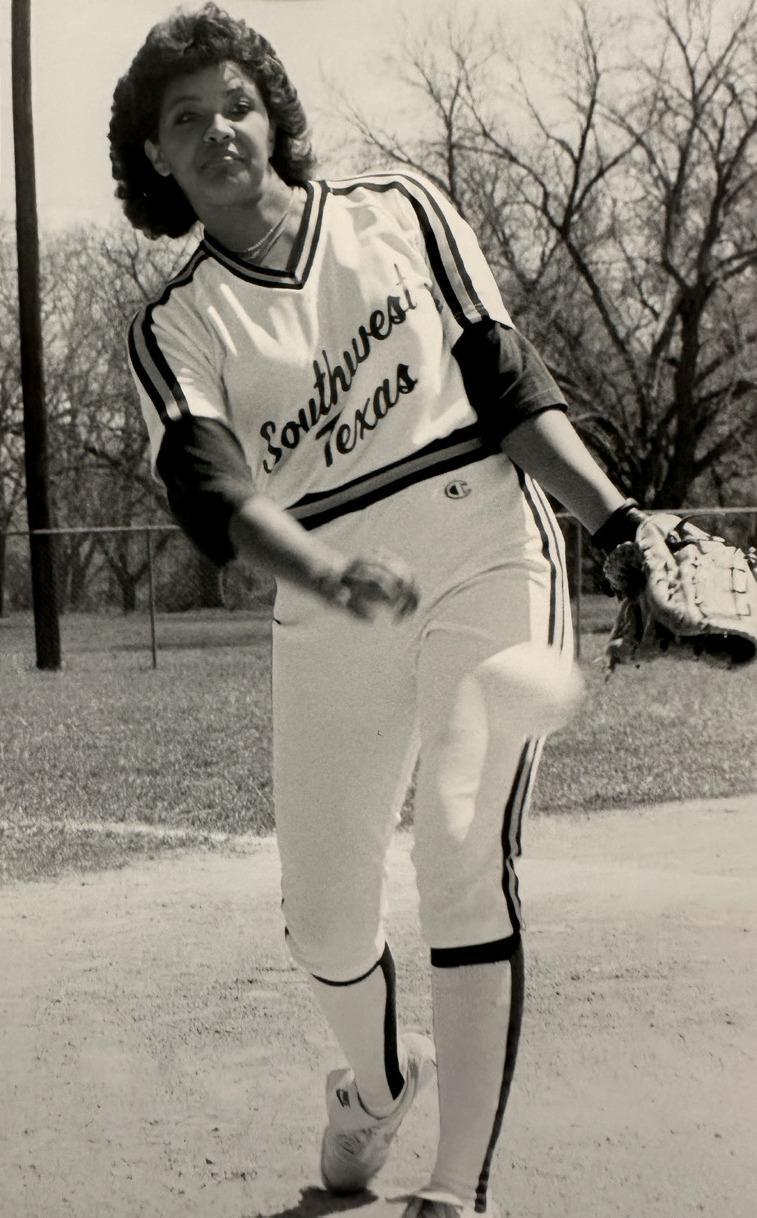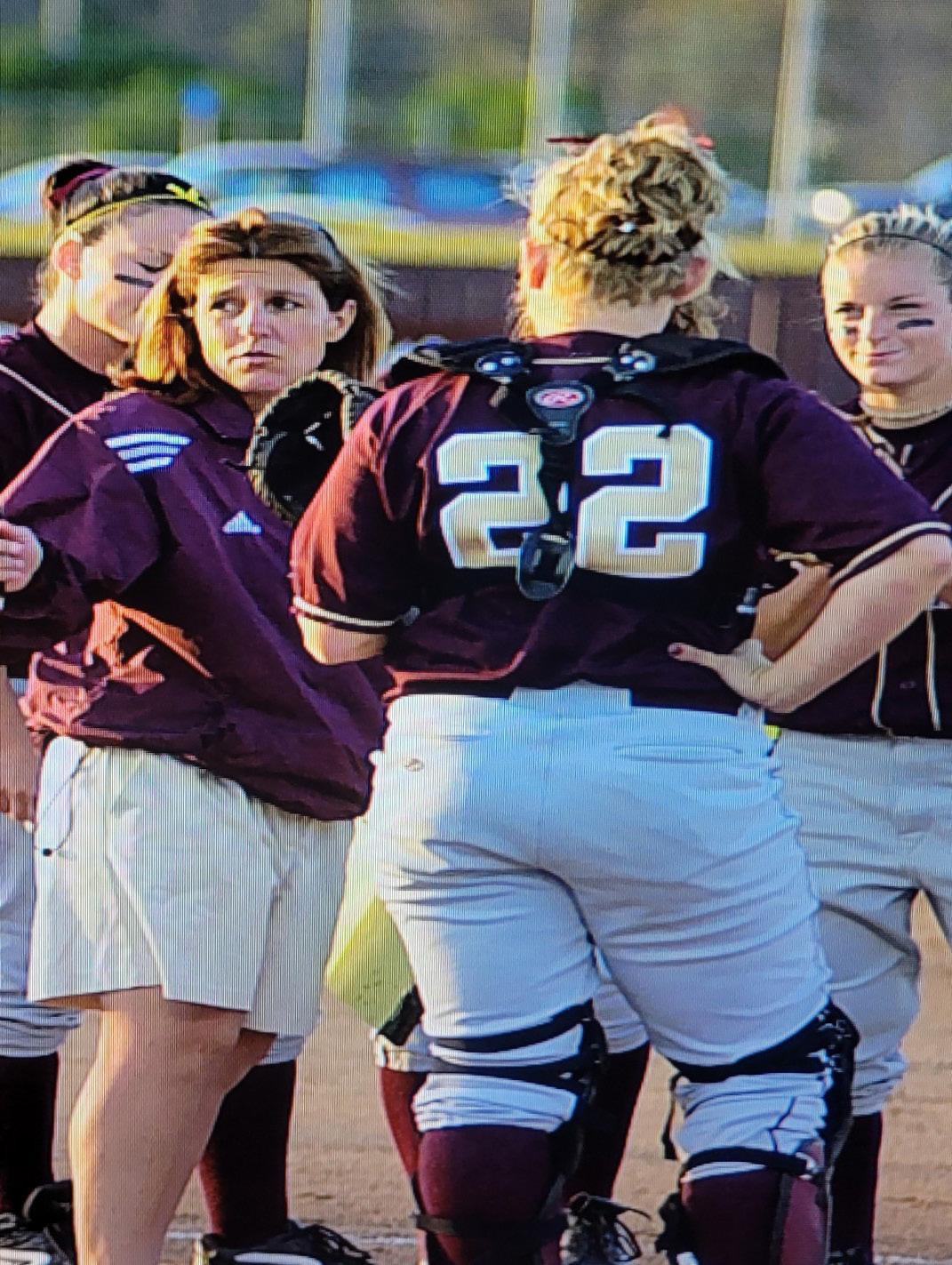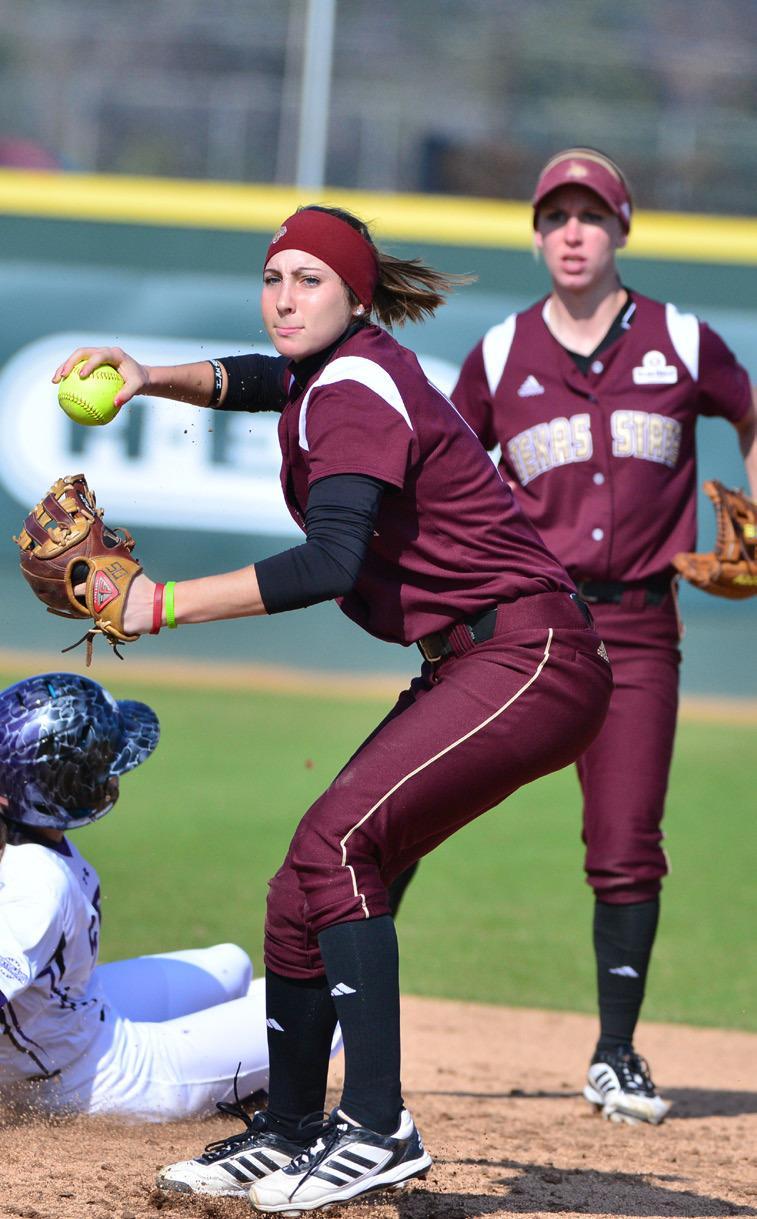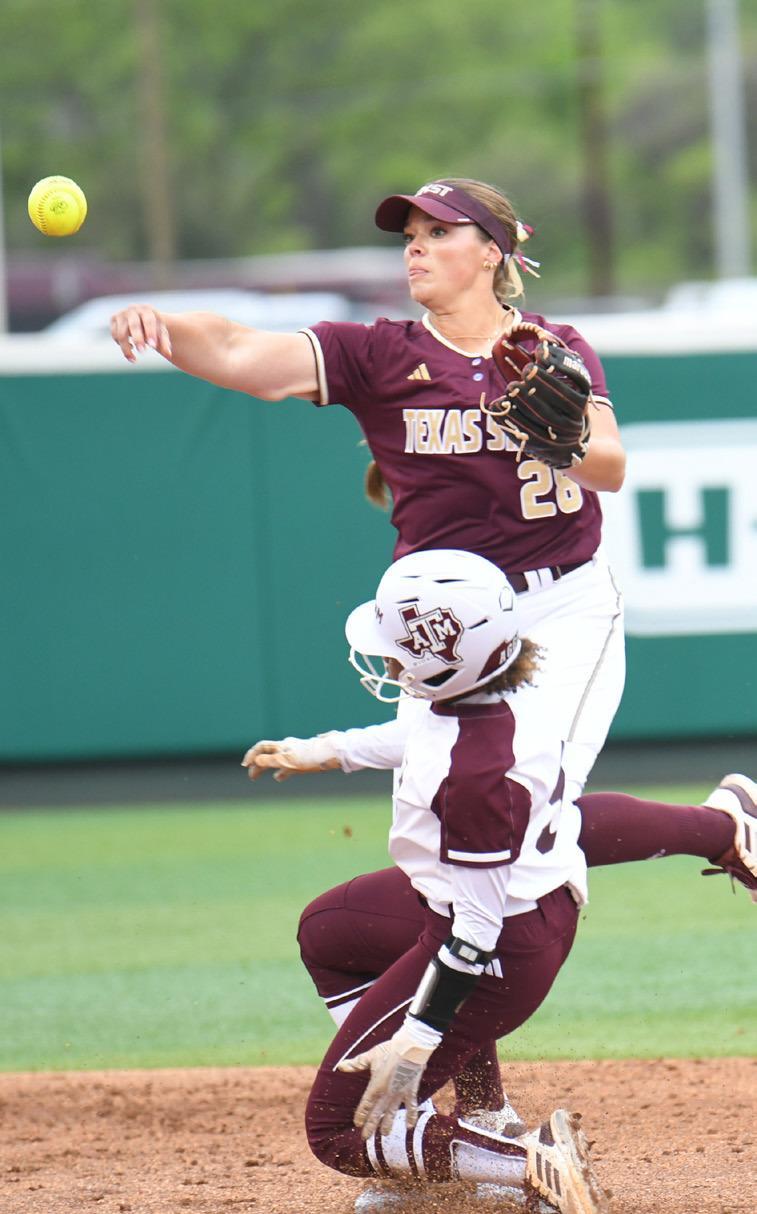



A look back at the Texas State Softball. Left, Monica Rivas from San Antonio pitching from the 1980s.
Submitted photo
Middle left, Head Coach Ricci Woodard gathers with the team during the 2001. Middle right, second baseman Danielle Warne looks to complete the double in 2014. Right, Katarina Zarate turns two in 2024.
Daily Record photos by Gerald Castillo
Bobcats celebrates 40 years history from humble beginnings
Last weekend, Texas State celebrated 40 years of softball history by honoring their former players and coaches.
Throwing out the first pitch during the celebration was Pam Wuestenburg, the first ever head coach of the softball program.
“It made me proud that they were recognizing that softball had started 40 years ago and that a lot of us were still around,” Wuestenburg said. “Any progress is good and the right progress has been made. The most significant moment for me was when we were introduced as SWT teams, the stands gave us a standing ovation. That was extremely special.”
Wuestenburg was Head Coach of the Bobcats from 1985-1994 leading Southwest Texas into the new realm of softball.
However, the choice to add softball did come with its fair share of controversy.
“In 1984, the university was moving from the Lone Star Conference to the Gulf Star Conference,” Wuestenberg said. “When you go into different conferences and different levels of competition, you need to have the same sports. We had gymnastics and swimming but nobody else did so the university made the decision to drop both of them which was controversial.”
Being named head coach due to her experience coaching a travel league team in Austin, Wuestenburg faced many challenges.
One of the difficulties was that Texas High Schools were not playing softball due to the fact the University Interscholastic League did not sponsor the sport.
“It goes back to the times,” Wuestenburg said. “Softball was not in the high schools and not in all of the universities. The majority of the kids that played were in the summer leagues. It was an extensive summer league throughout California, Colorado, and Texas so we were getting kids playing softball but they were not playing for the high schools.”
While the Bobcats faced a talent problem, Texas State also had another: where to play.
For the first three years, Texas State played and practiced in four different locations from City Park, to Gary Job Corps Fields and playing games in Seguin.
There Wuestenburg fought to get a softball field made for the team.
“It got to the point that we were not going to do anything if we didn’t have a field,” Wuestenburg said. “So the university built a field which cost $125,000 including lights. But they really did build a nice field and built it where it could host a regional using the standards required.”
Another challenge Wuestenburg also faced was the lack of scholarships “We were competing against the private schools for players,” Wuestenburg said. “That was St. Edwards, St. Mary’s and Texas Lutheran. We had two scholarships then it was bumped to four scholarships, which we had for a long time. What it really was that they gave me $25,000 in scholarship money. As long as their tuition stayed at $3,000, you had a decent amount of money to get players. But when the tuition started to increase, the $25,000 was kept the same which meant less money going to players.”
Wuestenburg continued to fight for the need of scholarships for softball before finally breaking through.
“That was one of the things I talked to the [Athletic Director} about,” Wuestenburg said. “It wasn’t competitive and we were losing momentum with this. So the scholarships increased. For about ten years, the scholarships were six and Lee Ann Jarvis who came in after me was fully funded with nine or eleven scholarships. She was able to get full scholarships and a full time assistant.”
But despite the challenges and the fights to improve the softball program, Wuestenburg didn’t fault the administration, noting how a house is built from the ground up.
“It wasn’t frustration but rather building,” Wuestenburg said. “When you build a house, you put the foundation down [first]. You don’t have boards on the side and you don’t have windows yet. You have to add those gradually to see how it goes. That is exactly what happened with softball and even baseball. The baseball team used to play their games at the little league fields in downtown. [That’s] how they built it because who knew how much money was going into this and how much it was going to cost while also trying to improve their facilities at the same time. I don’t fault them at all for how they did that.”
In the process of building the foundation, the Bobcats were able to break through and add some hardware to their trophy case for the first time.
In the 1989 season, the Bobcats, despite finishing in sixth place in the conference standings, rallied to win the Southland Conference Tournament for the program’s first ever conference title.
“We just had a really good weekend,” Wuestenburg said. “Part of it was it’s always frustrating when you are behind in scholarships [and] coaching staff, and it’s an uphill battle every day. But we had a good weekend. We were relaxed, it was the end of the season, and it just worked out that way.”
In the battle to improve softball, the Bobcats got help from the outside.
In 1993, the UIL recognized softball as an official sport under the banners which helped Texas State greatly into becoming the powerhouse program they are now known for.
“It created more interest and more participation,” Wuestenburg said. “Now there were more parents and players expecting more out of the colleges which helped. It also helped that we were in a prime location being in San Marcos.”
Another factor Wuestenburg pointed out in the Bobcats becoming a powerhouse was the hiring of Head Coach Ricci Woodard as well as the full backing from the university.
“When Woodard got here, she had a great resume,” Wuestenburg said. “She was a high school coach, an assistant at Oregon, which at the time was a very competitive national team. She knew what she was talking about, and she was willing to stay while having the demeanor to do it. That has been the biggest key in retaining the coaching staff and supporting them at the level they need to be supported.”
Texas State has since won 14 conference championships and appeared in the NCAA Tournament 11 times.
Being the foundation of the program, Wuestenburg is proud to have helped the program in her own way.
“When you build something, you know it’s not complete, and it can always be improved on,” Wuestenburg said. “It doesn’t happen overnight, everyone has to be on board with it and you need the right people. ... it never bothered me that someone else was successful. It only improves the university.”
cmcwilliams @sanmarcosrecord.com Twitter: @ColtonBMc











